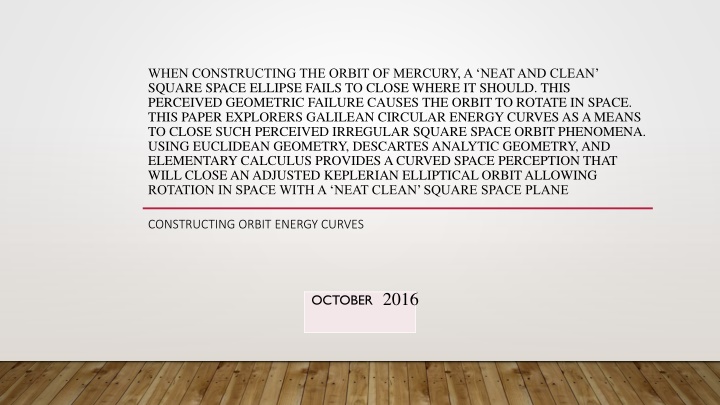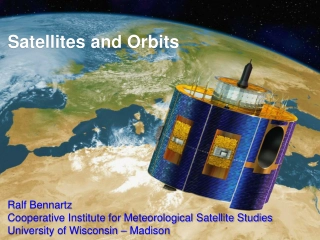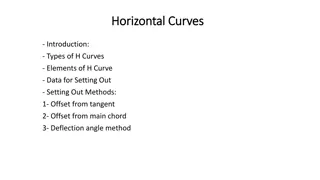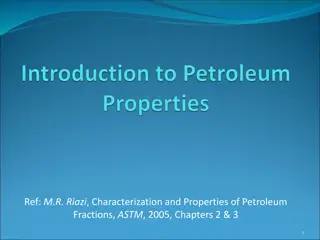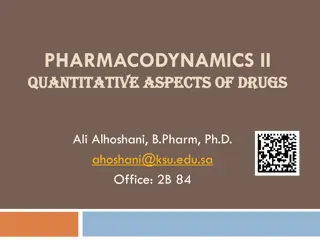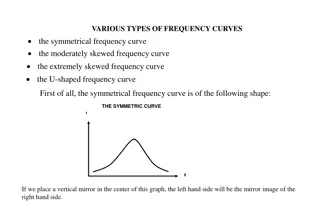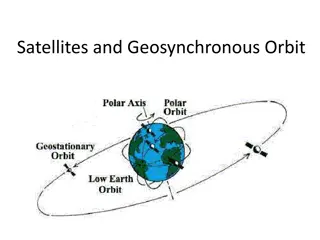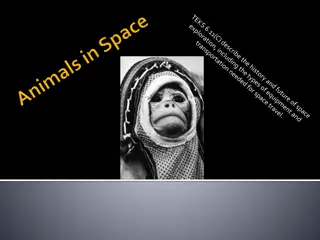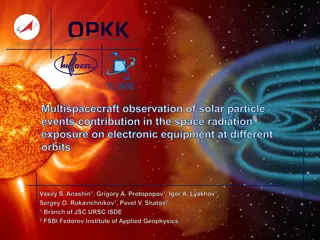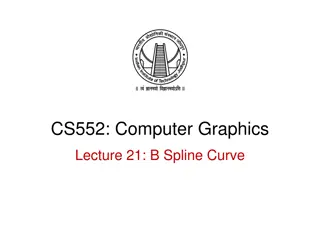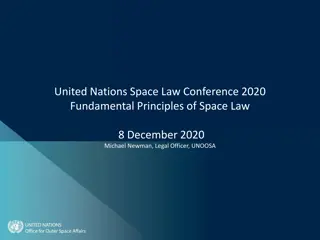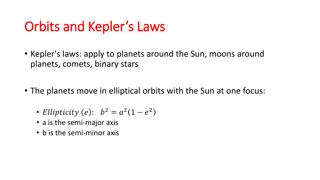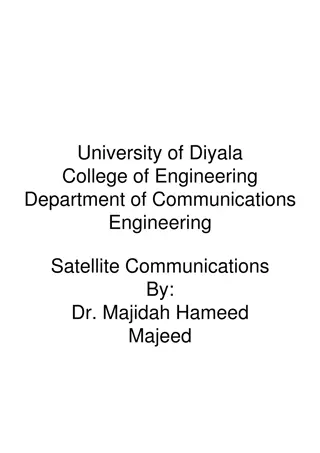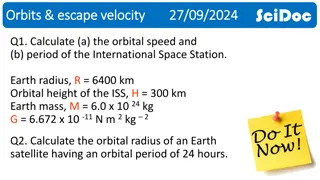Constructing Curved Space Orbits with Energy Curves and Gfield Systems
This paper delves into the geometric complexities of constructing the orbit of Mercury, exploring Galilean energy curves to rectify perceived irregularities in square space ellipses. Through Euclidean and analytic geometry, alongside elementary calculus, a curved space perception is introduced to appropriately close a modified Keplerian elliptical orbit while allowing for rotation in space. The utilization of energy curves, unit circles, and unit parabolas leads to a deeper understanding of Gfield systems and orbit dynamics.
Download Presentation

Please find below an Image/Link to download the presentation.
The content on the website is provided AS IS for your information and personal use only. It may not be sold, licensed, or shared on other websites without obtaining consent from the author.If you encounter any issues during the download, it is possible that the publisher has removed the file from their server.
You are allowed to download the files provided on this website for personal or commercial use, subject to the condition that they are used lawfully. All files are the property of their respective owners.
The content on the website is provided AS IS for your information and personal use only. It may not be sold, licensed, or shared on other websites without obtaining consent from the author.
E N D
Presentation Transcript
WHEN CONSTRUCTING THE ORBIT OF MERCURY, A NEAT AND CLEAN SQUARE SPACE ELLIPSE FAILS TO CLOSE WHERE IT SHOULD. THIS PERCEIVED GEOMETRIC FAILURE CAUSES THE ORBIT TO ROTATE IN SPACE. THIS PAPER EXPLORERS GALILEAN CIRCULAR ENERGY CURVES AS A MEANS TO CLOSE SUCH PERCEIVED IRREGULAR SQUARE SPACE ORBIT PHENOMENA. USING EUCLIDEAN GEOMETRY, DESCARTES ANALYTIC GEOMETRY, AND ELEMENTARY CALCULUS PROVIDES A CURVED SPACE PERCEPTION THAT WILL CLOSE AN ADJUSTED KEPLERIAN ELLIPTICAL ORBIT ALLOWING ROTATION IN SPACE WITH A NEAT CLEAN SQUARE SPACE PLANE CONSTRUCTING ORBIT ENERGY CURVES OCTOBER 2016
The following graph is a parametric description of the unit circle, unit parabola, and osculating circle at the parabola vertex showing vertex radius of curvature for the unit parabola curve is the diameter of the unit circle. An osculating circle is a math term for a "kissing" circle that best fits analysis of a location on a curve holding most accurate description of curvature as radius of that curvature. Forget the differential geometry meter of curvature and stick with two curves, the unit circle and unit parabola. We can assign calculus independent property to the unit circle paving the way to designate dependent status to the unit parabola. We can now use 1st year calculus to analyze energy curves. Note that dependent energy curve (parabola), will readily supply the parabola curve latus rectum as number line meter of position displacement from center of a Gfield system. I will show Gfield (mass/volume) system property can be invested with the independent curve unit circle providing a Gfield Figure 1: curve ratios of a basic CSDA working point mass. This next graph will designate CADA system center as ParametricPlot[{{?,?2 central force F of a Galilean central curve system and determine Gfield 4+ 1}, {Cos[?],Sin[?]},{2Cos[?],2Sin[?] 1}}, {?, 2,2},AspectRatio Automatic] acceleration curvature surrounding a Newtonian point mass.
These are the players I use to construct shaping energy of our solar population. Event Perihelion ( , t) Event Aphelion ( , t) Curved Space Focal Radius Event Perihelion ?, ? ? Curved Space Focal Radius Event Aphelion ?,? ? Unit circle ??? ? ,???[?] ?2 Unit Parabola ?, 4 ?+ ? . A CSDA unit parabola construction will have ? = ? always!
Methods of construction: Gather data of M2 Convert to curved space parameters Define parameters of construction. Define both M2 orbit curves. Next construct spin axis map of both M2 orbit (position, and position energy) curves and their limits. Superimpose event radii and focal radii on to spin map of energy curves. Find controlling abscissa for energy curve registration in preparation for move from spin axis view of an orbit to curved space view of an accretion plane. Gfield Orbital. theorem1: on curved space: the classic geometry frame of reference divides the field phenomena of curved space into two properties. Central properties of a field ASI (acceleration sphere of influence); and focal properties of a gravity field RT (relative tangent).
Two types of time squares will be needed to define both acceleration phenomena, one square for Constant Acceleration, and one square for Changing Acceleration. The Constant Acceleration time square is distinct from the Changing Acceleration time square by hypotenuse analysis. The Constant Acceleration square will use a traditional straight-line hypotenuse as time square diagonal, splitting space and time into respective characteristics needed to connect arbitrarily chosen position and potential of the field, directly with the generating central force. A Changing Acceleration time square uses a curved hypotenuse connecting quantified field potential spin of F, sourced from its dedicated (point mass) acceleration curvature, converting the 'curving potential' of a g-field point mass, into a gravity field PRINCIPAL ASI surface acceleration curve as the independent curving potential of a central force CSDA. Notice in the Changing Acceleration space time square, potential energy of central force acceleration phenomena is no longer curvature of a point but of a surface. The space time square has also been moved into field space where g-field potential is no longer a linear kinetic energy vector normal to a central force surface curve of a time square, but morphs into a perpetual motion radius vector captured between orbit position limits within and on a space&time square curved diagonal with respect to central force (F). It is here, at slope (m = 1), where potential of M1 begins the manufacture of gravity-field induced M2 space curves.
Let (c) be abscissa limit perihelion. Focal radius (h) has magnitude (2-f(r)). Subtract 1 from result for shaping radii highe limit. Construct spin curve (i) with (c) and shaping curve elimit.
Created with GeoGebra orbit energy curves at M1 spin axis; Alexander Curve (a) G-field porential Curve (b) dependent period curve (c) Orbit limit perihelion (d) Orbit limit aphelion (e) Low energy limit aphelion (f) High energy limit perihelion (g) Orbit energy perihelion (h) Position vector ?.?(?) perihelion (i) Orbit high energy transfer to M1 spin (j) Orbit low energy transfer to M1 spin (k) Orbit energy aphelion (l) Position vector aphelion (m) Orbit energy curve aphelion (n) Curved space directrix No. 1 2 3 4 5 6 Name Description Value Curve a Curve b Curve c Curve d Curve e Curve f Curve(1cos(t), 1sin(t), t, -5, 5) Curve(t, t / -4 + 1, t, -2, 2.6) Curve(1.59, t, t, -0.45, 0.37) Curve(2.41, t, t, -0.45, 0.37) Curve(t, -0.45, t, 1.59, 2.41) Curve(t, 0.37, t, 1.59, 2.41) Curve(0.63cos(t) + 1.59, 0.63sin(t) + 0.37, t, - 4, 4) Curve(t, 0.37 + 0.23 (-1.59 + t), t, 0, 1.59) Curve(0.63cos(t), 0.63sin(t) + 1.59, t, -5, 5) Curve(0.63cos(t), 0.63sin(t) - 1.59, t, -5, 5) Curve(1.45cos(t), 1.45sin(t) - 2.41, t, -5, 5) Curve(t, -0.45 - 0.19 (-2.41 + t), t, 0, 2.41) Curve(1.45cos(t) + 2.41, 1.45sin(t) - 0.45, t, - 5, 5) Curve(t, 1, t, -0.75, 3) a:(1cos(t), 1sin(t)) b:(t, t / -4 + 1) c:(1.59, t) d:(2.41, t) e:(t, -0.45) f:(t, 0.37) g:(0.63cos(t) + 1.59, 0.63sin(t) + 0.37) h:(t, 0.37 + 0.23 (-1.59 + t)) i:(0.63cos(t), 0.63sin(t) + 1.59) j:(0.63cos(t), 0.63sin(t) - 1.59) k:(1.45cos(t), 1.45sin(t) - 2.41) l:(t, -0.45 - 0.19 (-2.41 + t)) m:(1.45cos(t) + 2.41, 1.45sin(t) - 0.45) n:(t, 1) 7 8 9 10 Curve j 11 Curve k 12 Curve l Curve g Curve h Curve i 13 Curve m 14 Curve n
I next provide a list of entry level curves and lines for the orbit period of Mercury in parametric geometry form. 1. Perihelion 1.5887,? 2. Aphelion 2.4113,? 3. Energy level perihelion f ( ) ?,0.3690 ?2 4. Energy level aphelion f ( ) ?, 0.4536 ParametricPlot[{{?, + 1}, 4 1 5. Focal radius ( )... [1.6310] {1Cos[?],1Sin[?]},{1.5887,?},{2.41133,?},{2,?}, 6. Focal radius ( )... [2.4536] ?,0.36901 , ?, 0.45363 , ?,1 , .6310Cos ? + 1.5887,.6310Sin ? + 0.3690 , {1.4536Cos[?] + 2.4113,1.4536Sin[?] 0.4536}}, 5 2, {?, 2,5},PlotRange {{ 2,5},{ 3 2}}]
Orbit limits are found as end point time square diagonal defining period time curve in the Space&Time square construction of the CSDA. Perihelion MERCURY f ( ) Focal radius ( ) 1.5887 0.36900 1.63100 One of the most important things needed for curve registration is to identify square space variables. Principal variable will be the event radius. This term becomes the controlling abscissa of construction. The event radius is the original square space comparative for Gfield mechanical orbit computation where (r) varies inversely as degree 2. I have marked the event radius and have laid out parameters of both square space and curved space orbit diameters with respect to F. The focal radius provides meter for the changing mechanical energy experienced by an event radius orbit curve. As M2 steps through the period of orbit, time changing orbit energy causes the orbit to curve more toward M1 as perihelion looms and allows escape from M1 to return to aphelion on a releasing opening energy curve
Mercury demonstrates this phenomenon and I construct both curves and show where space curves keep separate controlling energy of orbit needed to allow space curve elliptical major diameter geometric completeness. Figure 5: two orbit curves sum orbit motion, one for position and one for energy of position. Both source from event radius of average energy where they are equivalent, congruent, establishing sum total available energy for stable orbit between M1 & M2.
3 TRANSFER ORBIT CURVES TO ACCRETION PLANE USING EVENT RADII AS PARAMETERS 2 1 2 1 1 2 3 4 5 1 2
TRANSFER ORBIT CURVES TO ACCRETION PLANE USING EVENT RADIS PARAMETERS 1. is not allowed to change shape of motive energy curve. 2. Center registration is constrained to the orbit period curve limit r = 1.5887. 3. If we let high noon be be accretion eventfor Keplerian elliptic major diameter end point for perihelion of orbit we see swallowing of orbit parameters leaving undefined a clean end-point closure . 4. If we allow center of energy curve to acquire curved space energy added to focal radius, we see a clean elliptic geometry can emerge. 2 1 2 1 1 2 3 4 5 1 2 Figure 7: two energy curves construction. one at high noon and one at 6:00PM on the accretion plane showing energy exchange (one square space; high noon, and one curved space 6:00PM) between potential and motion of stable Gfield mechanical orbit.
